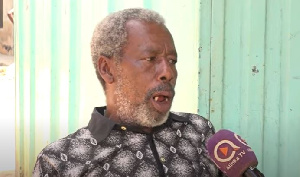Ebola: Profile of a dreaded killer
As the latest outbreak in the Democratic Republic of Congo (DRC) is declared over, here are some facts about Ebola.
Super lethal
The average fatality rate from Ebola is around 50%, varying from 25% to 90%, the World Health Organisation (WHO) says.
The virus is also highly contagious, which makes it difficult to contain especially in urban environments.
It is transmitted to people from wild animals and spreads among humans though close contact with the blood, body fluids, secretions or organs of an infected person.
Chimpanzees, gorillas, monkeys, forest antelope and porcupines can also become infected, and humans who kill and eat these animals can catch the virus through them.
Fever, bleeding
People who are infected do not become contagious until symptoms appear which occurs after an incubation period of between two and 21 days.
High fever, weakness, intense muscle and joint pain, headaches and a sore throat are often followed by vomiting and diarrhoea, skin eruptions, kidney and liver failure, internal and external bleeding.
After-effects have often been observed in survivors, including arthritis, problems with vision, eye inflammation and hearing difficulties.
Treatment and vaccine
At present there is no licenced drug to prevent or treat Ebola although a range of experimental drugs are in development.
In the latest outbreak, thousands of frontline health workers received an unlicensed vaccine called rVSV-ZEBOV, which had been trialled in the latter stages of a pandemic in West Africa.
The vaccine was deployed after test data showed it was safe and effective. Its disadvantage is that it has to be kept at an extremely cold temperature, which adds to the challenge of distributing it in hot countries with an unreliable electricity supply.
To contain the spread of the virus, patients and people who have been in contact with them are routinely isolated. Medical personnel are meticulously protected with disposable full-body plastic suits, masks, goggles, gloves and disinfecting sprays.
Named after a river
The virus was first identified in 1976 by a team that included a young Belgian microbiologist, Peter Piot, who later founded the UNAIDS, the United Nations’ agency against HIV/AIDS.
They named the virus after a river in the DRC – then known as Zaire – that was close to the location of the first known outbreak.
Four of the virus species are known to cause disease in humans – Zaire, Sudan, Bundibugyo and Tai Forest.
Worst outbreak: 11 300 dead
The world’s worst outbreak was started in December 2013 in southern Guinea and spread to neighbouring West African countries Liberia and Sierra Leone.
It claimed the lives of more than 11 300 people from the nearly 29 000 registered cases, according to the WHO estimates.
The real figure may have been significantly higher.
More than 99% of victims were in Liberia, Guinea and Sierra Leone although cases popped up all over the world, sparking panic.
The WHO declared the epidemic over in January 2016, although this was followed by flare-ups in all three countries.
The DRC has had nine known outbreaks. The latest was publicly declared on May 8 and was announced over on July 24, having claimed 33 lives.





